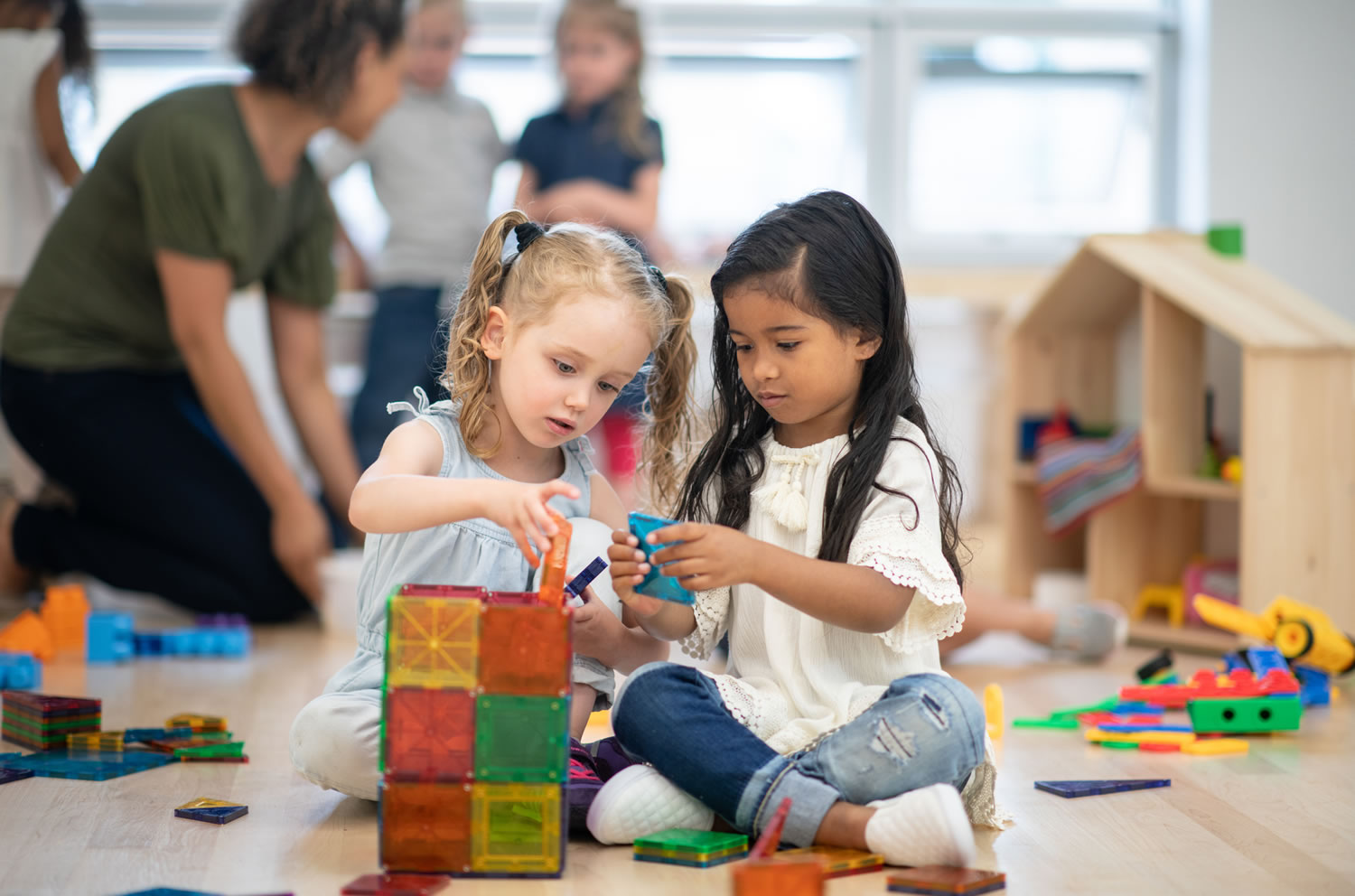5 Montessori techniques to try
Published on Tuesday, 21 September 2021
Last updated on Monday, 20 September 2021

While adopting the Montessori programme in its entirety is a significant undertaking for any service, there are a few key elements you can take away from this multi-layered child-led approach to learning, adding them to your own service to encourage self-esteem, self-awareness, self-discipline and independence among the children in your care.
Montessori teachings and practices are in many ways aligned with Te Whāriki’s principles of the empowerment and holistic development of young children through their educational journey and are especially helpful in encouraging the outcomes of contribution, communication and exploration.
Here are five aspects of the Montessori approach that you can try to share the Montessori ideals with staff and the children in your care, for a well-rounded approach to early learning.
- Get organised
One of the key tenets of the Montessori approach to education is presenting an aesthetically pleasing, clutter-free space set up with independent play and learning areas, which children can access and interact with themselves.
Setting this up in the first instance and maintaining it at the end of each day requires a fair amount of organisation on behalf of teachers, but it allows children to be in charge of their own daily activities, exploring what interests them and learning at their own pace.
“Think about ways to ensure that the environment is predictable while also enabling you to provide novel items of interest,” suggests Dr Vicki Hargraves in her article ‘The Montessori Approach’ for The Education Hub.
“Try to reduce clutter and improve the aesthetic appeal of areas and use environmental layouts to indicate to children where and how to engage with different types of activity.”
- Respect the child
When children are treated with respect and courtesy, they learn to treat others with respect and courtesy. While the language we use when speaking to young children is by necessity quite simple, it does not need to be didactic or demeaning, two approaches that may be employed when speaking infants and toddlers.
Talk to your students as individuals worthy of respect, rather than talking at them or talking down to them. This style will develop their sense of self-confidence and self-worth, as well as modelling to them how they should be treating others.
Introducing manners by ensuring you are always courteous and respectful when interacting with young children is a wonderful way to demonstrate your respect for them and also what you expect from them in return.
- Follow their lead
Trust in their abilities and readiness. Observe each child to see where their interests lie, what their skill levels are and how they are interested in learning.
Maria Montessori, the founder of this educational approach, believed that young children want to learn and grow, and instinctively know what they need to learn for their particular developmental stage.
Montessori activities and methods are separated into different age groups - 0 to 3 and 3 to 6 for example - as well as into different areas of learning such as working on hand-eye coordination, music and movement, practical life (such as self-care, getting dressed, etc.), arts and crafts, and language.
Provide a range of appropriate materials for completing particular tasks, in accessible containers such as trays or open shallow boxes, and let the children decide for themselves what they want to work on.
- Help them to help themselves - enable independence
“Never help a child with a task at which he feels he can succeed.” - Maria Montessori. “The aim of the Montessori approach,” says Dr Hargraves, “is to support children to unfold their own potential by giving them the freedom to explore an environment that is designed to meet their developmental and individual learning needs and that enables them to lead their own learning.”
Once you have observed the children in your care, ensure that they have access to resources and materials that suit their areas of interest, then leave them to it. As an educator it can be hard to step back from teaching and allow children to learn by themselves, but it can be much more enriching and fulfilling for children to make discoveries and achieve tasks under their own initiative.
Your role should be as a guide, showing the children how to complete a task then offering assistance when needed, but otherwise allowing the learning opportunities to unfold naturally.
5. Encourage creativity
This can be done through imagination by providing areas and materials for pretend play, such as a home corner where children can pretend to be making dinner or baking cakes, caring for a baby or pet, or taking care of their environment by cleaning, watering plants, etc.
You can also encourage creativity in an artistic sense. This is where creating a visually appealing space decorated with height appropriate artworks and beautiful, accessible materials for self-expression through art and music comes into play.
Try to be less prescriptive with materials; choose materials for open-ended expression such as blank pages and coloured pencils rather than colouring-in books, and loose building blocks rather than modelling kits.
Related Articles

A close look at the Montessori approach
An overview of the Montessori approach to early childhood education and care; one of the most popular and fastest growing educational philosophies in the world.

What can Montessori early education offer preschoolers and toddlers?
How the Montessori movement has since spread from Italy to more than 100 countries around the world to support children and families.

Nurturing awe and wonder: The Curiosity Approach
Curious about the Curiosity Approach? This article covers the five main pillars of this early education pedagogy fast gaining popularity around the world.
